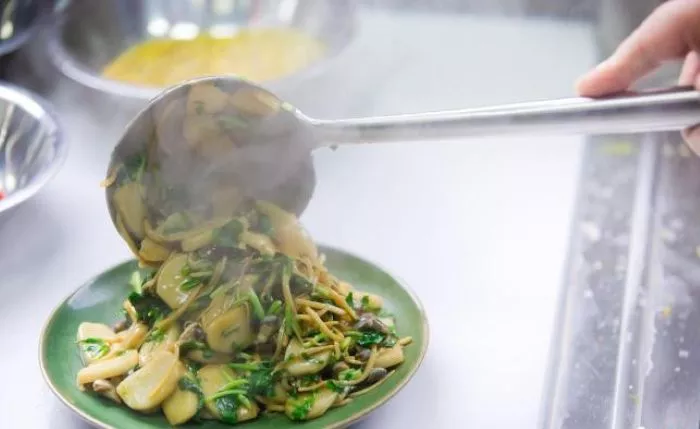A curious trend has taken Chinese social media by storm, with hashtags like “Zhejiang people raise rice cakes” and “Do Zhejiang folks still have rice cakes left?” going viral. Even netizens from northern regions like Inner Mongolia have begun emulating the practice of “raising” rice cakes in water. This tradition, deeply rooted in Zhejiang’s culinary culture, involves submerging rice cakes in water to preserve them throughout winter.
Yang Hongbo, a manager at a rice cake factory in Cixi Town, Ningbo—dubbed “China’s Rice Cake Homeland”—explains the science behind the method. “Keeping rice cakes immersed in water maintains their moisture. With regular water changes, they stay fresh all winter.” Ningbo-style rice cakes distinguish themselves through a unique “water-milling” process, using freshly harvested late japonica rice ground with water to achieve their signature smooth, tender texture.
Historically, Zhejiang households would manually produce dozens of kilograms of rice cakes before Lunar New Year, storing them in cold water from December through spring. While vacuum-packed variants now dominate the market for convenience, many families still adhere to the traditional water-preservation method. For generations, children have been tasked with fetching these chilled cakes from basins, creating enduring childhood memories tied to the ritual.
“Winter water is crucial—it prevents dehydration, keeping the cakes soft. But once temperatures rise, microbial growth ruins them,” notes Hu Jinfang, another local factory owner. The cakes’ cultural weight extends beyond preservation; their name (“nian gao” 年糕) homophonously signifies “rising higher year after year,” making them a Lunar New Year staple symbolizing prosperity.
Innovation Meets Nostalgia in Rice Cake Culture
From pan-fried cakes to stir-fries with snow cabbage or crab, Ningbo’s rice cake dishes remain beloved. Yet producers are innovating with flavors like pumpkin, purple sweet potato, and even ice cream to attract younger consumers—except in Hong Kong, where tradition reigns supreme. Hu’s factory supplies over 90% of Hong Kong’s traditional Ningbo-style rice cakes, shipping 2,000+ water-filled barrels since October. These barrel-preserved cakes, humorously dubbed “water-raised rice cakes” online, sell out rapidly.
The enduring demand stems from nostalgia among Hong Kong’s Ningbo diaspora. Bao Hongxun, chairman of the Hong Kong Bao Dasan Foundation, recalls childhood visits where fried rice cakes’ caramelized aroma filled kitchens: “That crispy exterior giving way to sweetness—it’s my quintessential New Year memory.” Since the 19th century, Ningbo merchants settling abroad carried culinary traditions with them, embedding tastes like these in communities worldwide.
Despite modernization, younger generations like Bao still seek connections to their heritage through food. The unwavering popularity of Ningbo rice cakes in Hong Kong underscores how cultural identity simmers, quite literally, in the pots of tradition—proving that some flavors withstand the test of time and tide.
Related Topic:
- Morocco: A Tapestry of North African Wonders
- Australian Tourism Industry Rides China’s Visa-Free Wave
- 2025 Chinese Opera Festival Debuts in Vienna with Stunning Wu Opera Performance

